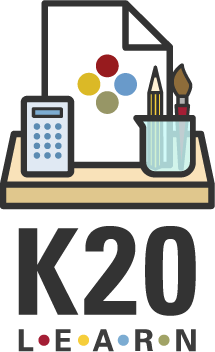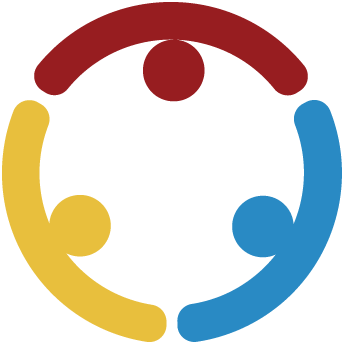Summary
This activity helps solidify knowledge and practice map skills by studying European Explorers. Students research a specific explorer and then share their knowledge with the class through a Gallery Walk. Then, students make their own route to the New World on a map with colored pencils. This activity is good for two classes to do together.
Essential Question(s)
Why did explorers travel around the world? How do you explore an uncharted path?
Snapshot
Engage Students will learn about European explorers and their routes, then go out to the playground where a map will be waiting.
Explore “Guiding” students will stand on the map and help “explorer” students reenact the route that their chosen explorer took on their journey.
Explain Students will find a partner to travel their explorer’s path with them. This is recommended for two classes to do together.
Extend Students will draw each explorer’s route on a map.
Evaluate Students will share with the class about the route every explorer took on their journey.
Materials
Map of the World (attached; one per student group)
Video Note Sheet (attached; one per student)
Gallery Walk Handout (attached; one per group)
Exploration Guide (optional)
Engage
50 Minute(s)
Start by introducing the attached Columbus Painting to the class. Have each student take out a piece of paper and draw a line down the middle. Label the upper half “I Notice” and the lower half “I Wonder.” Have students list their observations and questions on the respective sides of the paper. Ask for some volunteers to share their “I Notice, I Wonder” statements, then share with the class that it can be hard to know what is correct and what is incorrect about events that happened a long time ago. Next, have students turn their papers over and fold them in half horizontally.
Using the “I Used to Think…” strategy, have students write on one half of the piece of paper what they currently think about Christopher Columbus. Have students set their papers aside. Show the class the video about Christopher Columbus together. Watch the video Christopher Columbus | PBS World Explorers and allow time after the video for them to write what they now know about Christopher Columbus. Have students share what they learned with an Elbow Partner. Once they are done discussing, have students flip over their paper and look at their “I Notice, I Wonder” questions. Ask the students if their questions have been answered and If they still have unanswered questions, use those to begin a discussion with the class.
Have students set their papers aside. Project a copy of the attached Explorer Handout. Write “Christopher Columbus” at the top of the handout. Complete the handout together as a class.
Explore
45 Minute(s)
Separate the class into groups of three or four. Give each group a copy of the Explorer Information Chart and make sure each has access to an internet connected device. Assign each group an explorer from the list below. Have each group watch the linked video for their respective explorers.
Ponce de Leon, Hernando de Soto, Francisco Coronado, John Cabot, Sir Walter Raleigh, Henry Hudson, René-Robert Cavelier Sieur de La Salle, Jacques Marquette and Louis Jolliet
After each group has watched its video, provide time for each group to fill out their handouts. Check in periodically to see if they need any additional information or have questions on their routes. Take up each of the handouts at the end of class.
Explain
90 Minute(s)
Post every group’s handout around the classroom before the start of the third day. Inform the class that they will participate in a Gallery Walk around the classroom. Assign the students to the groups they had yesterday and give each group a copy of the attached Gallery Walk Handout. Give each group ten minutes at each handout to write down the explorer’s name, where the explorer started, where the explorer ended, what the explorer did, and why the explorer was important. Monitor the students to be sure that they are not having trouble getting their facts.
Have each group come up with two or three facts that they would like to share with the class as well as a speaker for their group. Then have each group say one fact until every group has shared, then repeat until the class is over.
Extend
90 Minute(s)
Return each student back to their groups and tell them that today, they will become explorers! Give each group a large sheet of chart paper and the attached Map of the World. Using the map as a guide, provide time for the students to draw and label their continents and oceans on the chart paper. Hand back each group’s original Explorer Information Chart and instruct the students to draw the route that their explorer took with a colored pencil.
After they have drawn their explorer’s route, tell students that now, they will be able to make their own route! They can travel any way they would like as long as they start and end at the same points as their explorer. They must make at least two stops and label and explain why they are stopping there. Give the students 20 minutes to come up with their route.
Once time is up, each group must decide on a speaker. Have each group present to the class their route and their stops. Once every group has gone, congratulate the class on becoming explorers!
Evaluate
45 Minute(s)
Using the Rose, Bud, and Thorn strategy, have students reflect on the positive and negative knowledge they learned about the age of exploration over this week. Have students take out a piece of paper and write “rose,” “thorn,” and “bud” on three sections. `For the “rose", have students write what excited them while learning about explorers. For their “thorn,” have students write about the misconceptions we believe about explorers and what they found “wrong” about what the explorers did. For their “bud,” ask students to consider what could be explored by the next generation of explorers, including themselves. Pair students up and have them share their responses with their partners.
Differentiation for Gifted Learners
Making map on playground with large pieces of paper; timeline of explorers made digitally
Gifted learners could make their own version of the route activity outside on a playground by cutting out continents with chart paper. They may also make a timeline of the explorers that the class has discussed, using the attached Explorer Guide as a guide. The final PowerPoint can be presented to the class by the group of gifted learners.
Resources
Christopher Columbus | PBS World Explorers. (n.d.). PBS LearningMedia. Retrieved June 10, 2024, from https://oeta.pbslearningmedia.org/resource/58b6bd78-c924-4d32-b48d-d9590b862ff5/columbus-pbs-world-explorers/
Francisco Vázquez de Coronado | PBS World Explorers. (n.d.). PBS LearningMedia. Retrieved June 10, 2024, from https://oeta.pbslearningmedia.org/resource/pbs-world-explorers-coronado/pbs-world-explorers-coronado/
Henry Hudson | PBS World Explorers. (n.d.). PBS LearningMedia. Retrieved June 10, 2024, from https://oeta.pbslearningmedia.org/resource/pbs-world-explorers-henry-hudson/pbs-world-explorers-henry-hudson/
Hernando De Soto | PBS World Explorers. (n.d.). PBS LearningMedia. Retrieved June 10, 2024, from https://oeta.pbslearningmedia.org/resource/pbs-world-explorers-desoto/pbs-world-explorers-desoto/
John Cabot | PBS World Explorers. (n.d.). PBS LearningMedia. Retrieved June 10, 2024, from https://oeta.pbslearningmedia.org/resource/john-cabot-pbs-world-explorers/john-cabot-pbs-world-explorers/
Juan Ponce de León | PBS World Explorers. (n.d.). PBS LearningMedia. Retrieved June 10, 2024, from https://oeta.pbslearningmedia.org/resource/ponce-de-leon-pbs-explorers/ponce-de-leon-pbs-explorers/
K20 Center. (n.d.). Gallery walk / carousel. Strategies. https://learn.k20center.ou.edu/strategy/118
K20 Center. (n.d.). I notice, I wonder. Strategies. https://learn.k20center.ou.edu/strategy/180
K20 Center. (n.d.). I used to think…but now I know. Strategies. https://learn.k20center.ou.edu/strategy/137
K20 Center. (n.d.). Rose, bud, and thorn. Strategies. https://learn.k20center.ou.edu/strategy/2224
Louis Jolliet & Jacques Marquette | PBS World Explorers. (n.d.). PBS LearningMedia. Retrieved June 10, 2024, from https://oeta.pbslearningmedia.org/resource/af74d68c-5a82-401e-b4e1-f431827b547b/louis-jolliet-jacques-marquette-pbs-world-explorers/
René-Robert Cavelier de La Salle | PBS World Explorers. (n.d.). PBS LearningMedia. Retrieved June 10, 2024, from https://oeta.pbslearningmedia.org/resource/de-la-salle-pbs-world-explorers/de-la-salle-pbs-world-explorers/
Sir Walter Raleigh and John White | PBS World Explorers. (n.d.). PBS LearningMedia. Retrieved June 10, 2024, from https://oeta.pbslearningmedia.org/resource/pbs-world-explorers-raleigh-white/pbs-world-explorers-raleigh-white/


